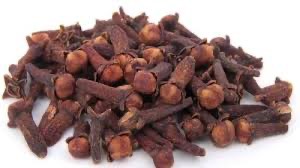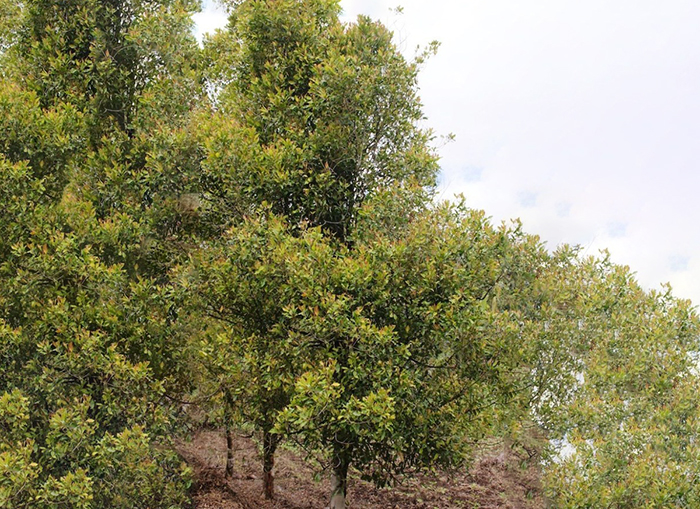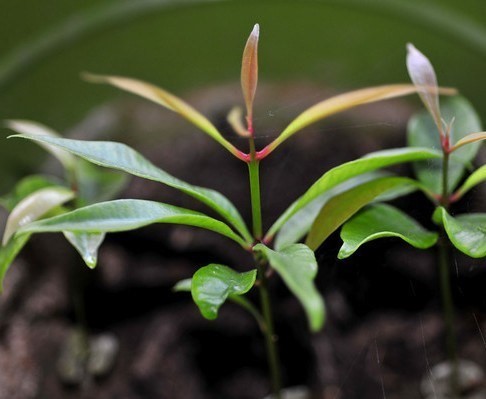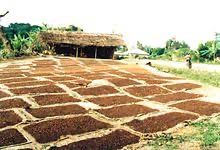The Humble Clove
Spice wars have been fought; enemies have been made- just to possess this glorious spice called “clove”. One of the few spices to come under the flower category, cloves are native to the Molucca Islands – now a part of Indonesia. Legend has it that every time a child was born in Molucca, a clove tree would be planted. It was believed that the fate of the tree was linked to the fate of the child. There are other narratives which tell us that the Chinese used to pop a few cloves, to sweeten their breathe, prior to making an appearance before the Emperor. Though frail and delicate in appearance, cloves have a strong, pungent and sweet taste. Cloves are essentially the rich, brown, dried, unopened flower buds that belong to the syzygium aromaticum, an evergreen tree in the myrtle family. The name clove comes from the French clou and the Latin word clavus meaning nail, for the simple reason these buds resemble small irregular nails.

Cloves

A clove tree
Cultivation
Clove tree cultivation is a very long-term project that comes with long term benefits. It takes about seven to eight years, before one can even contemplate the first harvest. These trees cannot be grown in areas with a cool climate. Hot, humid, and relatively wet weather is are a prerequisite to grow cloves. The clove seeds are placed directly on the ground and do not need to be buried in the soil. Germination takes about 6 weeks following which the delicate seedlings begin to sprout.
Clove trees need a lot of care. They demand to be fertilised regularly and judiciously, to get them to flower correctly. It is only after the 7th or 8th year, that they begin to yield and reach their zenith after about 15 to 20 years. When the buds begin to change colour from green and acquires a pinkish tinge, it signals the picking stage. The timing here is very crucial or the quality of the cured produce will be lost to a great extent. This is yet another spice that is picked by hand. These trees grow to a height of 60m or so. So, when the trees are tall and the clove bunches are beyond reach, platform ladders are used for harvesting. The future bearing of the trees is prone to be compromised by physically bending the branches or trying to knock down the bud clusters with sticks. So, the harvesting is done with utmost care. The harvested buds are dried on palm mats. This process takes about 4 to 5 days. Only an experienced clove drier can gauge the proper state of drying. That would be the point when the buds snap easily.

Clove seedling

Clove buds and flowers

Drying of clove buds
Uses
Tiny though it maybe, the clove has many curative properties. It helps in preventing damage to the body cells, its anti-inflammatory property helps fight infections, it plays a role in controlling diabetes and cardiac issues, and just chewing on a couple of cloves keeps our digestive system in good shape. As a great energizer it provides an overall boost to our health. However, it has to be used sparingly in a dish. In their ground form, they can easily overwhelm a dish. Ground cloves bring a warm and distinctive flavor to desserts, curries and chutneys. Clove tea, prepared by simmering a few cloves in boiling water, has a number of health benefits. The paan masala industry too uses cloves extensively. The oil extracted from cloves – eugenol, is said to contain great medicinal properties. Manufacturers use cloves liberally in their toothpastes, soaps, cosmetics, perfumes and there are even cigarettes called kreteks which contain about 20 to 40 percent ground clove.
Though humble in stature, the clove is truly a gift from nature!
 Government of India
Government of India

































 Recognizing the ongoing need to position itself for the digital future, Indian Culture is an initiative by the Ministry of Culture. A platform that hosts data of cultural relevance from various repositories and institutions all over India.
Recognizing the ongoing need to position itself for the digital future, Indian Culture is an initiative by the Ministry of Culture. A platform that hosts data of cultural relevance from various repositories and institutions all over India.